In this tutorial, we will cover two important data structures in Python: Dictionaries and Sets. We will discuss how to create and access dictionaries, various dictionary methods, as well as sets and set operations.
Dictionaries
Dictionaries in Python are unordered collections of items. While other compound data types have only value as an element, a dictionary has a key: value pair. Dictionaries are optimized for retrieving data as they allow you to store and access data using a unique key.
Creating Dictionaries
You can create a dictionary using curly braces {} or the dict() function.
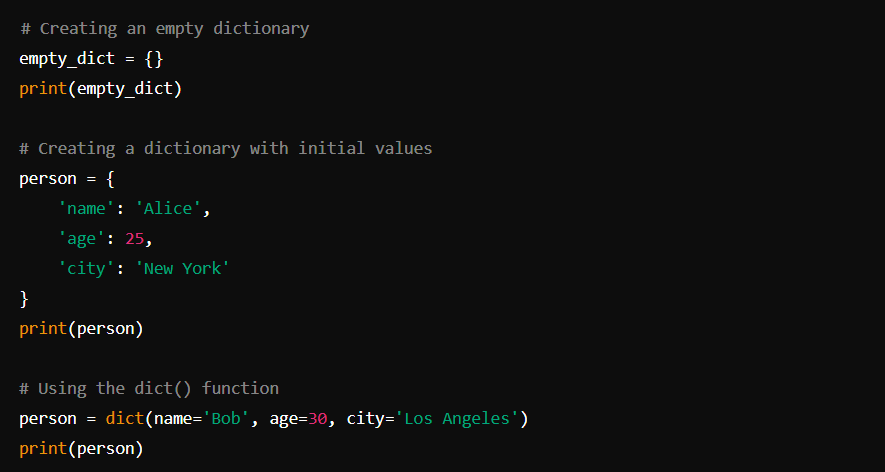
Accessing Dictionary Elements
You can access the value associated with a specific key using the key inside square brackets [] or the get() method.
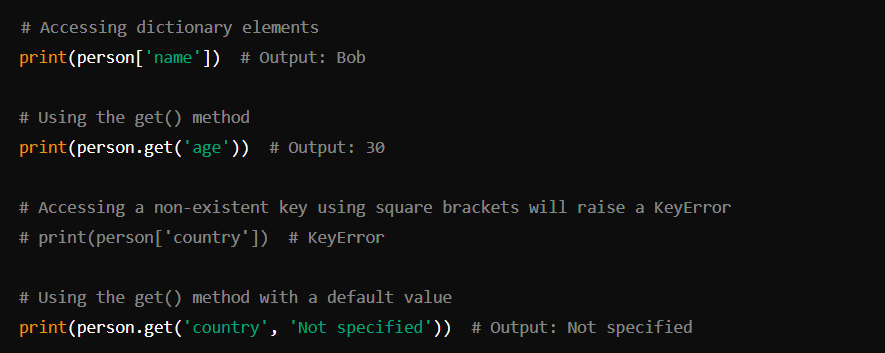
Modifying Dictionary Elements
You can add or update elements in a dictionary by using assignment.

Removing Dictionary Elements
You can remove elements from a dictionary using the del statement, pop() method, or the popitem() method.
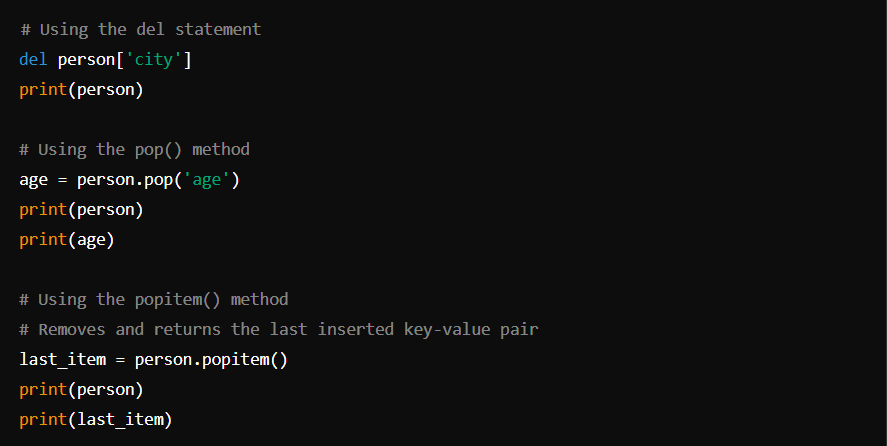
Dictionary Methods
Python provides several built-in methods to work with dictionaries. Here are some of the most commonly used methods:
clear()
Removes all items from the dictionary.

copy()
Returns a shallow copy of the dictionary.

fromkeys()
Creates a new dictionary from the given sequence of keys and a value.

items()
Returns a view object that displays a list of a dictionary’s key-value tuple pairs.

keys()
Returns a view object that displays a list of all the keys in the dictionary.

values()
Returns a view object that displays a list of all the values in the dictionary.

update()
Updates the dictionary with the key-value pairs from another dictionary or from an iterable of key-value pairs.

Sets
Sets are unordered collections of unique elements. Sets are useful for membership testing and eliminating duplicate entries.
Creating Sets
You can create a set by using curly braces {} or the set() function.
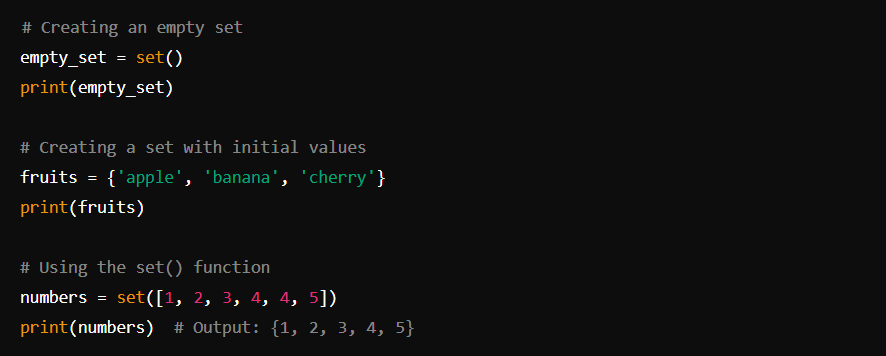
Accessing Set Elements
You cannot access individual elements in a set by index since sets are unordered. However, you can loop through the set using a for loop.

Adding Elements to a Set
You can add elements to a set using the add() method or the update() method.

Removing Elements from a Set
You can remove elements from a set using the remove() method, discard() method, pop() method, or the clear() method.
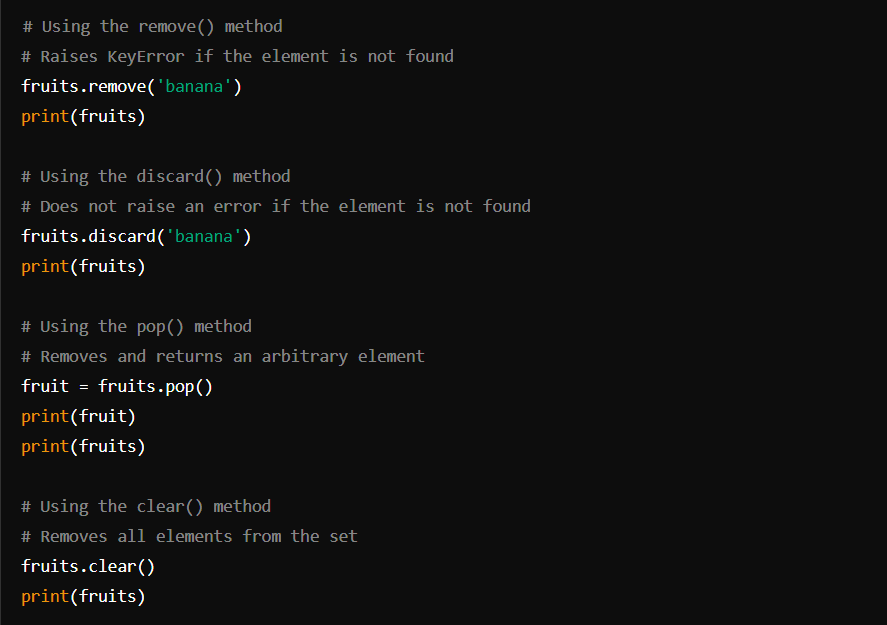
Set Operations
Python provides several operations that can be performed on sets, including union, intersection, difference, and symmetric difference.
Union
The union of two sets is a set containing all the elements from both sets. You can use the union() method or the | operator.
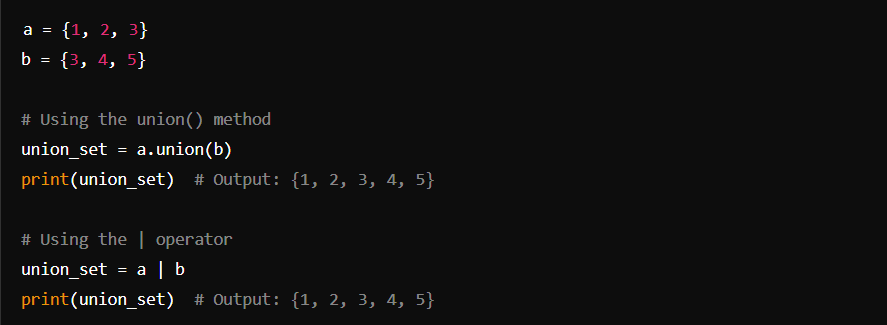
Intersection
The intersection of two sets is a set containing only the elements that are common to both sets. You can use the intersection() method or the & operator.

Difference
The difference between two sets is a set containing the elements of the first set that are not in the second set. You can use the difference() method or the - operator.

Symmetric Difference
The symmetric difference between two sets is a set containing the elements that are in either of the sets but not in their intersection. You can use the symmetric_difference() method or the ^ operator.

Conclusion
In this tutorial, we have covered dictionaries and sets in Python. We discussed how to create and access dictionaries, various dictionary methods, as well as creating sets and performing set operations. Understanding these data structures is essential for efficient data manipulation and retrieval in Python.